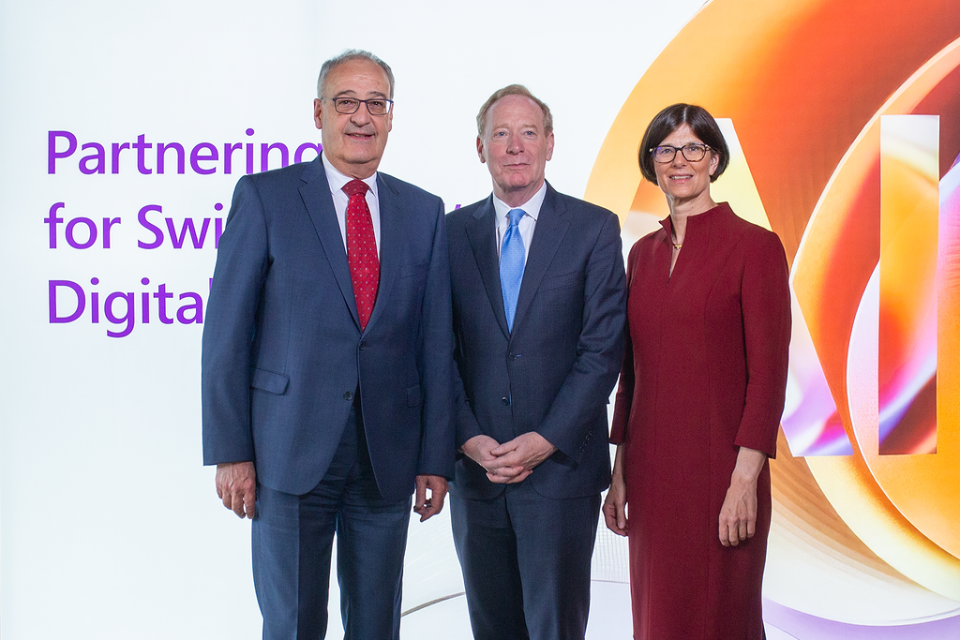Microsoft’s $400 Million Swiss AI Play: Bold Moves in a Tightly Regulated Market
Why Microsoft Just Bet Big on Switzerland
On June 2, 2025, Microsoft dropped a $400 million marker in Switzerland, and it wasn’t just for more server racks. This is a high-stakes campaign to win over one of Europe’s most privacy-conscious, innovation-driven economies. Four datacenters are getting a serious GPU injection. AI startup funding is getting a boost. One million Swiss citizens are being targeted for digital upskilling. And Microsoft is elbowing its way into policy circles in Geneva.

Upgrading the Hardware, Targeting the Institutions
The heart of the investment? More AI muscle in the form of next-gen GPUs. Microsoft is turning its Swiss regions into launchpads for data-heavy, regulated workloads. Think hospital diagnostic systems, banking algorithms, and government infrastructure that can’t leave the country’s borders.
With Switzerland’s cloud market set to nearly double to $2 billion by 2030, Microsoft isn’t just building capacity—it’s building early.
One analyst put it bluntly: “They’re setting up where compliance is king. That gives them the inside lane when regulation kicks in.”
Startups and SMEs: The Real Long Game
Infrastructure is one thing. But the real bet is on future consumption. Microsoft is funneling more resources into its Swiss AI Tech Accelerator and partnering with Innovation Parks to embed itself where ideas take shape. More than 1,500 startups have already passed through this pipeline, creating thousands of jobs and plenty of Azure usage.
The math is simple: the more startups that build on Azure, the more long-term customers Microsoft locks in. If even half of the 2025 cohort scale commercially, we’re talking tens of millions in new cloud revenue.
One Million Trained: Workforce Play or Window Dressing?
Microsoft says it wants to train one million Swiss in AI by 2027. The initiative spans students, educators, nonprofits, and tradespeople. There’s real value in this—an AI-literate workforce is a massive advantage.
Still, the results will hinge on outcomes, not numbers. As one education advisor noted, “Certifications are good. But if those people aren’t building with Azure, it’s just a PR stat.”
Geneva’s Policy Arena: From Participant to Influencer
Beyond the servers and startups, Microsoft is staking out space in Geneva’s policy circles. Its collaborations with the UNHCR, ITU, OHCHR, and others give it front-row access to the formation of global AI norms. With Switzerland drafting sector-specific AI laws set to drop post-2026, this proximity is no accident.
If Microsoft shapes the standards, it can shape the market. Especially in sectors where compliance isn’t optional.
AWS and Google Aren’t Standing Still
Microsoft isn’t alone in the Swiss cloud race. AWS already launched its Zurich region back in 2022 with a multibillion-dollar buildout. Google Cloud has been here since 2019, locking in academia and hybrid enterprise deals. Microsoft, arriving later, now has to punch above its weight to catch up.
Azure is at about 25% market share. The goal is to close that gap fast. The strategy? GPUs, Swiss-based data processing, and tight integration across its stack. And if OpenAI usage in Switzerland is any signal (up 3% in six months), traction is building.
The Scenarios: Three Paths, One Clock
Microsoft’s future in Switzerland breaks into three possibilities:
- Bullish: Azure grabs 40% market share, GPU use hits 90%, revenue hits $650M by 2028. IRR? 15%+.
- Moderate: A solid climb to 30% market share and $500M revenue. IRR lands between 8–10%.
- Rough Ride: Underused infrastructure, only $380M revenue, and a mere 3% return.
The clock is ticking. GPU clusters need to go live on time. The AI Accelerator must deliver real wins. And regulation must break in Microsoft’s favor.
What Investors Should Watch
Microsoft’s Swiss push offers meaningful upside:
- Optionality: For just 0.5% of its FY25 capex, Microsoft is buying a foothold in one of Europe’s most defensible cloud markets.
- Attach potential: Azure growth means more Microsoft 365, more Dynamics, more lock-in.
- Policy advantage: If Microsoft helps write the rules, they’ll likely build services that match.
Risks? Plenty. Delays in power grid upgrades, talent shortages, or a CHF surge could dent margins. But the investment case isn’t about immediate payoff—it’s about being indispensable by 2027.
Note: This analysis is informational. It isn’t investment advice. Always consult a licensed advisor.
Big Bet, Tightrope Walk
Microsoft’s $400 million commitment to Switzerland is more than a regional cloud play. It’s a move to embed itself in the digital DNA of one of Europe’s most privacy-conscious and strategically vital economies. If it can execute—on infrastructure, policy alignment, and ecosystem integration—Azure stands to become the de facto AI platform for Swiss public and private institutions.
But success hinges on more than racks of silicon. This is about local trust, compliance leadership, and geopolitical awareness. Microsoft isn’t just building a datacenter—it’s building narrative control around digital sovereignty. If it misses, the incumbents—AWS and Google—will tighten their grip.
The Missing Player: Swiss Hyperscaler Still Just an Idea
Yet even as the global giants move in, one question remains unresolved: where is Switzerland’s own public cloud provider? Despite a highly capable tech industry, there is no local hyperscaler that comes close to matching the scale or AI capabilities of Microsoft, Amazon, or Google.
With international tensions simmering and skepticism of U.S.-controlled infrastructure rising, local buyers are increasingly focused on digital independence. As one senior manager put it bluntly: “We, in Switzerland, cannot wait for or rely on American companies to build European or Swiss digital sovereignty. It is a joke.”
The absence of a Swiss cloud heavyweight isn’t just a market gap—it’s a strategic vulnerability. Until a serious contender emerges, foreign players will continue to shape the trajectory of Switzerland’s AI future. Microsoft’s bet might fill that vacuum for now—but the call for indigenous alternatives is growing louder.
